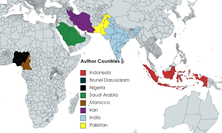A Systematic Review of Research to Determine Toxicity of Involuntary Tobacco Smoking as Compared to First Hand Smoking and if Chronic Involuntary Tobacco Smoking during Childhood Causes Skeletal Diseases Later in Life
Abstract
A child will breath up to 3 times the volume per body weight compared to an adult. A child’s organs and immune system are not fully developed to offer protection from airborne and residual toxins compared to an adult. A child is unable to control their environment or escape their home environment, an adult can change jobs or leave a toxic environment. Thus, children are the most susceptible to the effects of toxins in their environment. Tobacco Smoke exposure is the greatest toxic exposure risk a child faces in a home environment. Tobacco Smoke exposure starts in the womb when the embryo embeds in the mother’s uterus and connects to their mother’s blood flow. Tobacco smoke contains many osteotoxic, nephrotoxic, cytotoxic, and genotoxic chemicals that significantly alter genetic material in the developing fetus and child, which has long-term health effects leading to poor bone health and skeletal diseases later in life. Three of the many thousands of toxins in tobacco smoke which are most osteotoxic, nephrotoxic, cytotoxic, and genotoxic are lead, cadmium, and polycyclic aromatic hydrocarbons.

This work is licensed under a Creative Commons Attribution-ShareAlike 4.0 International License.
Authors who publish with this journal agree to the following terms:
- Authors retain copyright and grant the journal right of first publication with the work simultaneously licensed under a Creative Commons Attribution License that allows others to share the work with an acknowledgement of the work's authorship and initial publication in this journal.
- Authors are able to enter into separate, additional contractual arrangements for the non-exclusive distribution of the journal's published version of the work (e.g., post it to an institutional repository or publish it in a book), with an acknowledgement of its initial publication in this journal.
- Authors are permitted and encouraged to post their work online (e.g., in institutional repositories or on their website) prior to and during the submission process, as it can lead to productive exchanges, as well as earlier and greater citation of published work (See The Effect of Open Access).











